alms, alms for the ploppy
Guest
alms, alms for the ploppy: Ok, now that you guys are warmed up!
Thank you Don and Norm for your time and effort in answering my question. Also, thanks to Norm's tired computer. Who obviously worked the hardest.
Ok,
I had to ask that question before I could ask this one :-)
I am aware of proper ODP departure points.
What if you are in a very crowded casino and if you leave your full table you have to wait until that shoe is finished and the shuffle before you can play again. What is an idea for ODP for this scenario?
Or another way to look at it, it is a casino with one full table
Don,
In another thread you touched on this idea using a seat of the pants methodology.
Your words from that thread:
"When you start a shoe with typical rules,...,you have at best, about a 1% edge, if you play all. So, it stands to reason, with a seat-of-the-pants logic, that if you make the count negative enough so as to be 1% below the off-the-top edge, you negate that 1% edge and have about zero expectation for the balance of the shoe. Such a point would occur at TC = -2, for a count such as Hi-Lo."
Ok,
I ran and got my BJA3 and looked at page 244, table 10.59
4.5/6 H17 DAS, play all spread 1 - 16 pract. advantage .81%.
off the top disadvantage pg 394 is -.616
My math
The % increase in advantage from TC 1 to TC 3 is about .54% per true.
So seat of the pants:
You have an advantage of .81%
Off the top disadvantage of -.616
So you should leave the table if you have a disadvantage of approximately -.81 + -6.16 = -1.426% ?
Which would roughly mean a TC of -2 ?
However, if I am roughly right, then I see a problem. As soon as you declare your departure point you have a higher advantage, so the numbers above change? Is it still approximately correct or do we need a different formula?
Have I just touched upon one of the reasons the original ODP was so time consuming?
Assuming I am close enough, does this methodology work for 6 and 8 deck shoes with various rules?
Does this work with double deck?
I now have a headache! I hope I have not given anyone else one!
If you guys wrestle through this one I will try to leave you alone for awhile! :-)
Appreciate your time!



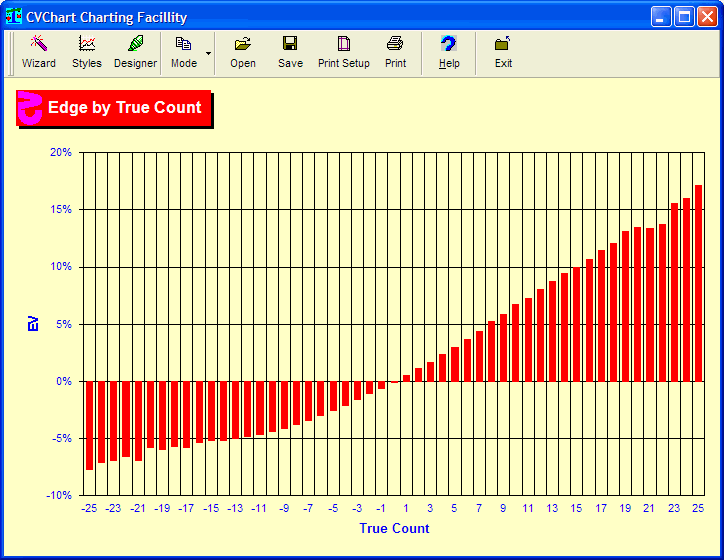
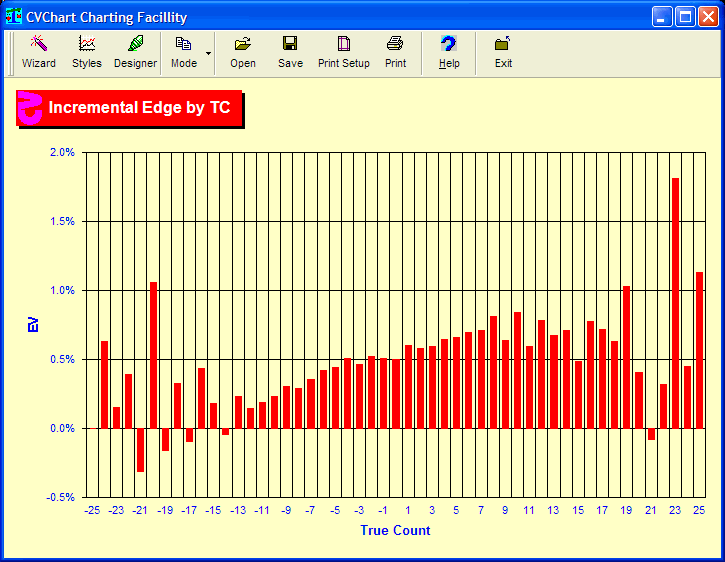
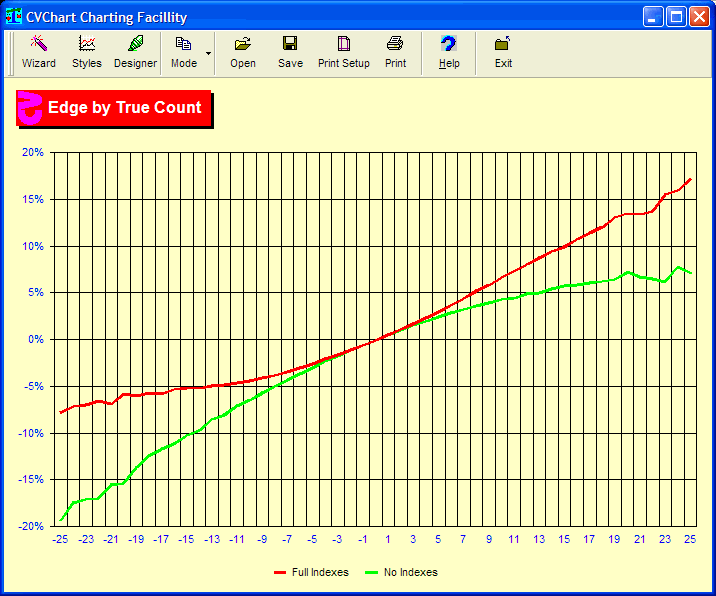
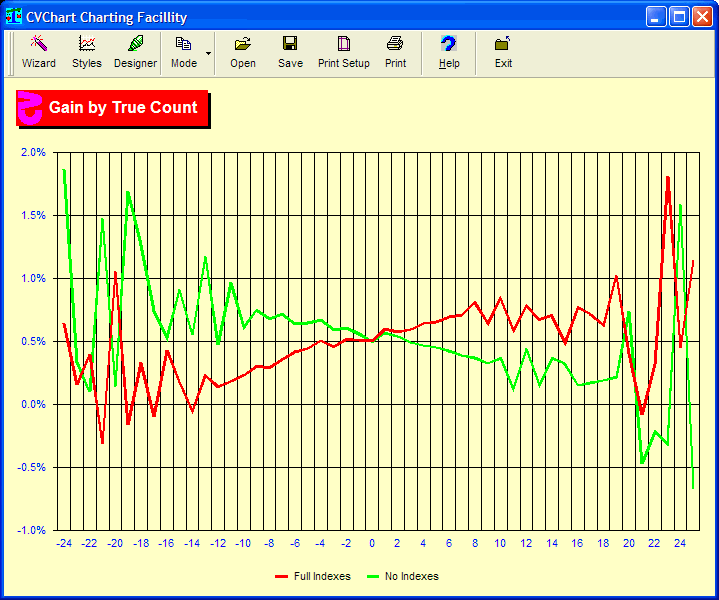
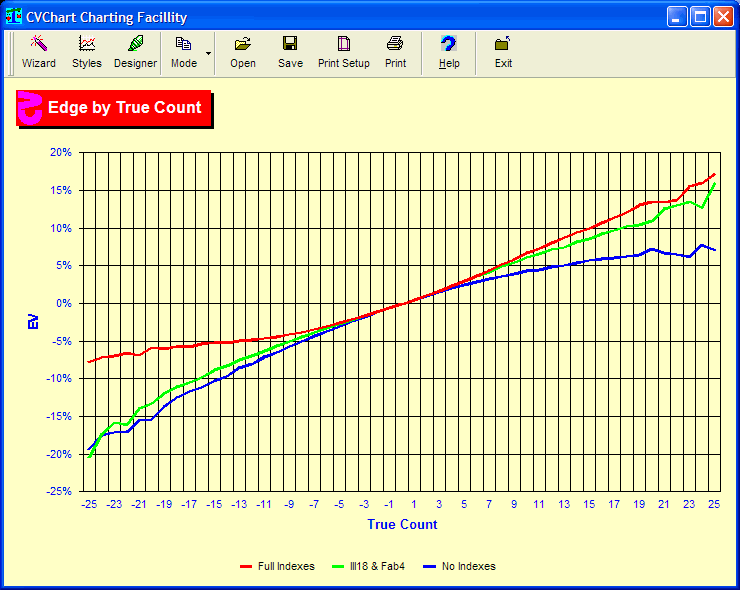
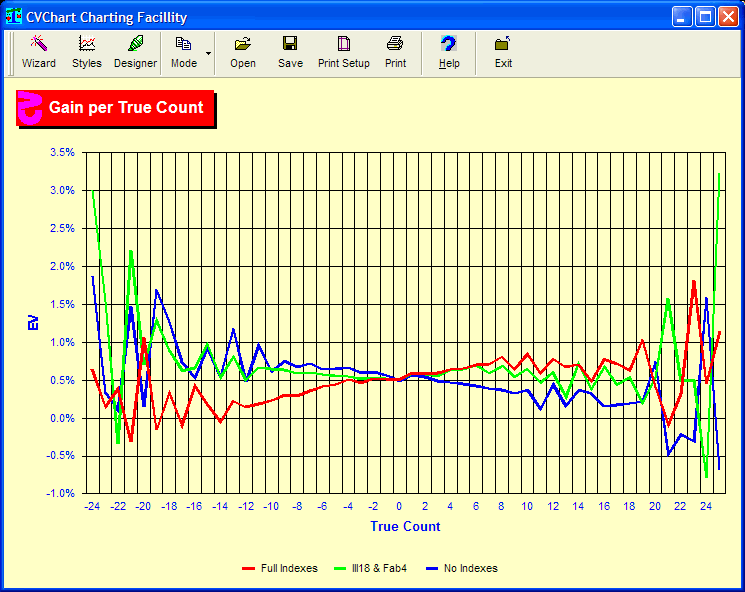
 But my PC begged me not to run any more tonight.
But my PC begged me not to run any more tonight.

Bookmarks